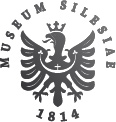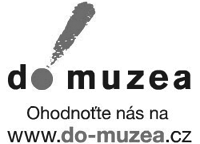Slezský sborník
rok 2017
ročník 115
číslo 1
OBSAH / CONTENTS
STUDIE / ARTICLES
Jarosław SZYMAŃSKI: Biblioteka księcia Ludwika I Brzeskiego (zm 1398)
s. 5–16
Library of Louis I of Brzeg (deceased in 1398)
The goal of this paper is to reconstruct the book collection gathered by prince Louis I of Brzeg. It primarily consists of the description and identification of the existing manuscripts. Louis I started to collect books as early as in the 1350s, later on he donated his collection to the library of St Hedwig's Collegiate Church, which he founded in 1369 and eventually they were moved the library of the Brzeg Gymnasium established in 1569. After World War II, the bigger part of the collection was moved to the University Library in Wrocław (hereinafter: ULW), where prince's Louis i manuscripts are kept in the Department of Old Prints of the ULW. One of the codes is located in the Department of Manuscripts of the ULW and the rest of the collection remains in Brzeg – in the Silesian Piast Museum, where historians identified one of the manuscripts from the prince's library. The information on other prince's manuscripts can be found in other sources; the most important one for the reconstruction of the collection is the testament of the prince of 1360, constituting provisional inventory of his library. Currently, we are able to identify ca. 25–27 manuscripts on history, morality and philosophy, as well as theology and liturgy. Collecting books and keeping the library are just part of many foundation activities of Louis I, who pursued his intellectual and religious goals all his life. Through his numerous activities, Louis I satisfied his passion for collecting and strengthened his political position by fostering the reputation of the dynasty and the prince.
Tomáš VELIČKA: Zeměpanské písemnosti pro slezská města (do roku 1360). Pokus o statistický přehled
s. 17–45
Sovereign documents for Silesian towns (until 1360). An attempt at a statistical survey
This work deals with sovereign documents intended for Silesian towns from the beginning of their existence until 1360. The subject of interest is their chronological stratification, the content groups, the ratings according to the publishers and the recipients, and the connection to the itinerary of the publishers of these documents.
Janusz SPYRA: „Cyganie wajdę wolą". O romskich przywódcach ze Śląska Cieszyńskiego przed i wojną światową
s. 47–55
"Gypsies are electing their leader (vajda)". About the Roma leaders from Cieszyn Silesia before World War I
Besides the nomadic way of life, Roma groups were also characterized (and are characterized) by the specific internal organization and the existence of their own leaders. These were often old men, in other cases they were people appointed by the local rulers. In Central Europe, before World War I, we most often encounter a form of selecting the leader from the members of the community. The article describes this type of leadership documented with the Romas living in Cieszyn Silesia in the 19th century. Here, the leader was called Vajda, from the word Vojvoda, i.e. the designation of a military leader.
Stanislav KNOB: Žil byl jednou jeden... aneb rekonstrukce osobního života prostřednictvím pramenů evidenční povahy na příkladu Petra Cingra
s. 57–77
Once upon a time there was a... reconstruction of personal life through non memoirs sources on the example of Petr Cingr
In general, the authors struggle to create biographies of prominent personalities with a disproportion of the source base to the public and personal life. The aim of the work is to introduce the sources and methods for writing a personal life of virtually any personality, but, for the purpose of illustration, the example of Petr Cingr will be used. Only some sources will be introduced: registers, census records, home registers, and statistics. The advantage of these sources is the fact that they are automatically acquired for all persons (of the parishes, municipalities, countries, states), regardless of whether they are or not famous, important or significant personalities. They are not so burdened with subjective selection and are universally applicable. Of course, the above mentioned sources have been used in historical research for a very long time, even for personal biographies, but, in their interpretation, there are still some reserves. Registers can be used not only for studying the genealogy of the ancestors of the personality, but also for getting to know the household, the important issue of godfathership and its changes, the population habits, the social relations and the transfer of patterns of behaviour, e.g. when choosing a job. Census records provide us with at least some insight into the level of housing and also bring a lot of useful information concerning the individual members of the household. The statistical material usually serves for generalization and determining averages (e.g. life expectancy). This can be used as a benchmark for evaluating individual events from a person's life.
Karolína HAZUCHOVÁ: Ervín Tengler pohledem písemné pozůstalosti
s. 79–98
Ervín Tengler From The Written Inheritance Perspective
The study focuses on the life and research activities of Ervín Tengler (1884-1941), a pedagogue, a regional historian and a chronicler of Moravian Ostrava. Based on the written inheritance deposited in the Archive of the City of Ostrava, Tenglerʼs extensive publishing and lecturing activities are reconstructed. a list of Tenglerʼs existing manuscripts is part of the text.
Vlastislav GALATÍK, Pavel ZONA: Československá samostatná tanková brigáda při osvobozování polské části Slezska (10. 3. 1945–15. 4. 1945)
s. 99–116
The Czechoslovak Independent tank brigade in the liberation of Polish Silesia (10. 3. 1945–15. 4. 1945)
The authors of the article focused on the fight of the 1st Czechoslovak Independent Tank Brigade within the Ostrava operation outside the territory of Czechoslovakia. This is the period between March 10 and April 15 in 1945, when the Brigade was active in the Polish and German parts of Silesia. The basis and the most important part of the article is an annotated war diary of the brigade accompanied by other archival resources. Based on archive materials, the authors have analysed the way the combat actions were conducted and the deployment of the Brigade itself in the context of time and space in which these actions took place. In the individual three sections, the authors deal with the preparatory period prior to combat deployment; combat actions themselves; and in the last section, they assess the losses that the Brigade had suffered and the losses the brigade caused to the enemy. The combat deployment of the Brigade in the Polish and German Silesia belongs to the lesser-known stages of our forces fighting during the Second World War. The article contents fills in this partial gap in perception of our military history. The article is a minor part of more comprehensive work which the Department of Military Art at the University of Defence in Brno deals with. It aims to analyse the combats in which Czechs and Slovaks had a significant share since the First World War.
Lubomír HLAVIENKA: Volby do závodních rad v období let 1945–1948
s. 117–130
Elections to work councils between 1945 and 1948
This article deals with elections to works councils in 1945 and 1947. Work councils represented one of the pillars of the newly established corporate democracy, and, in the process of selecting the workers' representatives, political party membership of the candidates should not have played any role. In few yearsʼ time, however, the political aspect became an increasingly important factor, particularly in 1947. The article focuses primarily on these elections as the political struggle over these work councils intensified during them and their course was disturbed by the resistance of the workers who did not elect their delegates in many places or in the repeated elections.
Recenze a zprávy o literatuře / Reviews and Brief Notices (s. 131–138)
Kronika / Chronicle (s. 139–144)
Bibliografická příloha / Bibliography (s. 145–146)
Poslední aktualizace článku: 28.03.2018
Vytisknout celý článek







